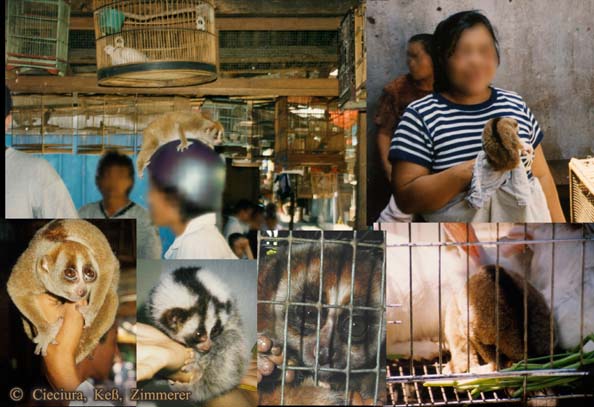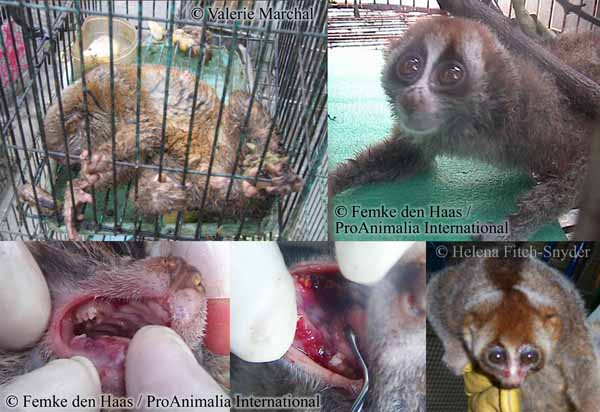 |
...... | If you see a loris illegally offered
on a
market,
please consider the following facts:
For each
animal
bought, the
next wild loris will be caught, or a loris mother be
killed and her
infant
taken away from her. Most loris forms are increasingly
endangered in
the
wild, and since they get few babies which are
carefully reared over
long
periods, losses due to hunting and trade increasingly
threaten wild
populations.
Trade
with these
sensitive
animals who easily die from stress is a cruelty.
Please also think
about
the fact that wild animals in captivity cannot choose
the place and
companions
they need for a satisfactory life, and that their
senses are much finer
than human ones: they will perceive, and suffer from,
things you do not
even notice. Lorises and pottos are adapted to free
life in the
nocturnal
forest. In captivity, they will suffer and most
probably die an early
and
unpleasant death from stress, painful diseases caused
by wrong feeding
or accidents in an inadequate environment. And they
often die a long,
agonizing
death, suffering for weeks or even months.
Lorises
permanently urinemark
their environment. In addition, they may be dangerous
pets. They can bite fiercely when feeling disturbed,
and they produce a
toxin which in humans may cause severe to fatal
anaphylactic
shock.
And: Since lorises and pottos are threatened and protected animals, buying them and keeping them as pets is illegal in almost all countries, often with very high fines. So: Please
do not buy lorises as pets!
Do not
support poaching
and the cruelty of illegal trade!
|



